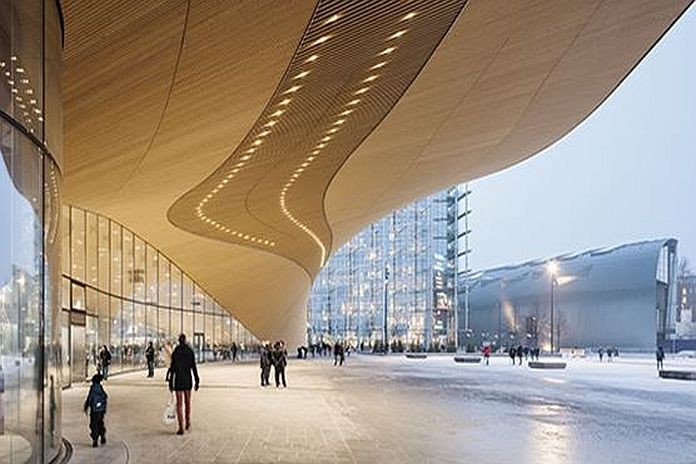By Steven Dorst
One country, Finland, is answering the call in an unexpected way – replacing fossil-based chemicals, key emitters of greenhouse gases, with renewable raw materials such as wood to produce goods, services, and energy.
With 65 percent of its land covered by forests, Finland has wood in abundance. That share is expected to grow, thanks to the country’s Forest Act, which mandates that four trees be planted for every tree harvested.
Environmental benefits abound. Cutting-edge Finnish companies are coming up with new ways to use wood, from the production of clothing to multistory buildings, from packaging to sustainable fuels and even battery production. Products are easy to recycle, biodegradable, and hypoallergenic, and CO 2 can remain stored in cut wood for decades and even centuries.
“Replacing fossil fuels and materials such as plastic or concrete and steel used for building with wood and bio-based materials limits the carbon emissions to the atmosphere,” says Lotta Heikkonen, chief specialist with Finland’s ministry of agriculture and forestry.
The economic incentives of this growing market for wood-based products further motivate smart tree management. And many of the wood-based products are made from production by-products and residues or from materials recovered after product use.
“In a circular bioeconomy, products are bio-based,” says Timo Heikka, vice president of stakeholder relations at Stora Enso Oyj, a manufacturer of pulp and paper products based in Helsinki. “They are also being shared, reused, remanufactured, and recycled. Finally, they biodegrade or are used for renewable energy. Trees grow back, absorbing CO2, and so the cycle continues.”
While biomass alone can’t replace all the materials produced from fossil and mineral sources, “there will be further opportunities to replace fossil-based raw material components with renewable wood-based ones,” says chief technology officer Jyrki Ovaska with Finnish company UPM, which makes a host of wood-based products ranging from biofuels to biomedical products. “This is where molecular wood-based biochemicals play a key role.”
Finland isn’t new to climate action. The first country to introduce a carbon tax, in 1990, it has since cut greenhouse gas emissions by about a fifth. But its ambitions don’t end there: Finland has set a goal ofbecoming carbon-neutral by 2035. It plans to do this by deploying electric vehicles, phasing out fossil fuel heating, and creating carbon sinks to absorb and neutralize CO2 emissions.
Although carbon emissions in Finland are already subject to significant pricing, additional measures are needed to achieve the 2035 emissions neutrality goal. The IMF is working with Finland on additional energy pricing and sectoral measures to help bridge the gap.
While Finland’s wood-based approach to climate change may not work for all countries – given climate differences and the trade-offs between agriculture and tree growth – it offers a timely reminder to rethink how we can harness nature to address the global challenge of climate change.
Steven Dorst is a documentary film producer.
This article first appeared in the most recent issue of Finance & Development Magazine produced in conjunction with COP26.






